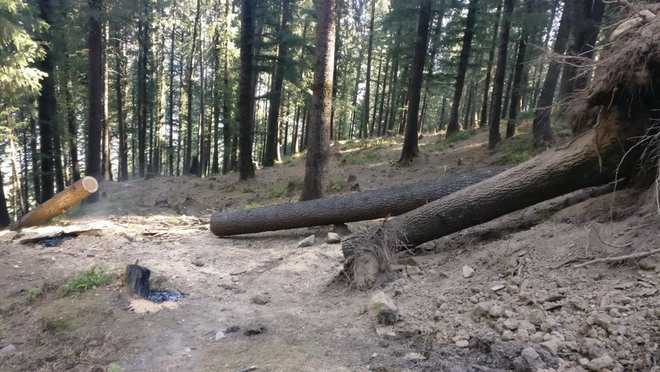
Considering that India aims to cover 33 per cent of its geographical area with forests, the preening of Environment Minister Harsh Vardhan over an increase of 1 per cent in greening over the past two years resulting in 24.4 per cent coverage seems misplaced. Rather, going by the fine print in the India State of Forest Report (ISFR) 2017 brought out recently by the Dehradun-based Forest Survey of India, there seems little cause for celebration. Firstly, the 2017 report is based on information from 633 districts as compared with 589 covered in the 2015 report. Second, the mapping scale does not differentiate between actual forests and monoculture plantations or orchards, thus possibly giving an inflated figure. The pride that India is ranked 10th in the world in terms of land area under forest and tree cover is offset by certain alarming statistics: now 24.4 per cent of our area is forest, even though it accounts for 2.4 per cent of the world’s surface area; but we have the onerous responsibility of sustaining the needs of the world’s 17 per cent of human and 18 per cent livestock population. This puts enormous pressure on the forest wealth and resources.
There is need to not only preserve and promote fauna and foliage, but also to use it with caution and economy. But worryingly, we do not seem to have learnt any lesson from the previous report. The five states where the forest cover contracted the most are in the biodiversity rich northeastern region. These states had similarly witnessed deforestation in 2015 as well as 2013. Lands degraded by illegal quarrying and mining or denuded by tree felling need to be facilitated into recovering their natural forestry and balanced ecosystem. We must not lose sight of the forest for the trees.
The ISFR brings some cheer, too. That some increase in forestry has happened in very dense forests (VDF) is encouraging. Since VDF absorbs maximum carbon dioxide, it will help reduce carbon emissions, a key factor in combating climate change. The statewise assessment must goad each state towards better agro-forestry practices and more green marks than red flags. For example, Haryana needs to look into the decrease in the extent of water bodies in its forests.



























